The commercial real estate bust is going to be legendary. We are talking trillions of dollars. The attention of Americans is being pulled away by massive market volatility that has seen the S&P 500 shoot up 44 percent in four months. Yet the U.S. Treasury and Federal Reserve have kept their eye on this market and have started examining a “Plan C” focused on bailing out this industry even before major problems occur. The new preemptive doctrine of bailouts. That is, they want to saddle the taxpayer with further burdens on some of the most speculative bets known to humankind.
First, it is certain that commercial real estate will have problems. If we examine certain vacancy rates, we see that they are already starting to creep up:
The above chart is merely reflecting the deep contraction in the real economy. Businesses are needing less and less of that plentiful office space that is floating in the market. So much for the dream of an Eames Lounge chair sitting in your office space, entertaining clients while the $5,000 monthly lease payment sits on your mahogany desk. On the other hand, if you are looking for retail space you will find some room to negotiate.
More supply with less demand equals lower prices. Lower prices means tanking commercial real estate operations. You see, just like the residential housing bubble banks made extremely risky loans on commercial properties on very thin capital. All was well as long as the market went up. Now the assumption was real estate values were never going to go down. This faulty reasoning was bad enough. But to assume unrealistic appreciation rates caused many banks to jump in head first into a pool with no water.
The reason this will also cause a financial headache is that many regional banks without the clout of bigger Wall Street banks will begin failing in mass. Many regional banks unable or unwilling to compete with subprime and toxic loans (or their local market didn’t have enough customers) started making risky bets with CRE. There are more CRE loans out in the market and people probably don’t have a solid grasp of this. Let us look at some FDIC data:
26 percent of all loans in FDIC insured bank portfolios are backed by the CRE market. In total, over $3 trillion in commercial real estate loans are outstanding. Of course, it is highly unlikely that this portfolio will fall to zero but commercial real estate has less of a buffer than residential real estate. How so? An overvalued home in an area with people will find a buyer. So even a loan that was made for $400,000 at the peak and now finds a bottom at $200,000 is very likely to find a buyer. That is not the case with many CRE projects. Some communities are economically in shambles so there may be zero incentive for any business to rent even if the price was zero. Ultimately CRE is a business decision. A home can be just a home as we are now re-learning.
How many states are in tough times?
*Source: Bond Buyer
A large focus has been given to California but countless states are facing budget deficits. Budget deficits do not have an allegiance to the sunny west coast. Deficits are only going to increase as the unemployment rate climbs. The American consumer is being squeezed on multiple angles including onerous credit card gimmicks so many are cutting back on spending (aka less foot traffic in commercial real estate properties).
All across California vacancy rates are increasing:
*Source: L.A. Times
“Among his tasks is finding a buyer for Park Fifth, a stalled $1-billion high-rise condominium and hotel development proposed for a block next to Pershing Square downtown. At Playa Vista, he advised the owners of the enormous Spruce Goose hangar — built by famed aviator Howard Hughes — to take it off the block because prices are depressed.
Muhlstein tries to use humor to cope with hard times in the commercial real estate industry, a business in such pronounced distress that some experts predict its problems will thwart the nation’s hopes for an economic recovery.”
The commercial real estate bust is simply gigantic and is a coming down the tracks at a hundred miles an hour. We are now seeing Manhattan real estate coming down in the double-digits which was heresy during the bubble. The market has changed and in the real economy, not much has changed:
Industrial production is still heading lower. So why would businesses need so much office space? Do some people still believe in that service sector mantra? The one in which we basically offshore any goods-making jobs and basically sell homes and financial products to one another while not manufacturing anything? As this recession is now showing, that assumption was wrong.
The market recovery is based on optimism that things will be back and we’ll see some kind of “V” shape recovery. There is no room for an “L” shaped recession or a double-dip recession in these predictions although that is most likely what we will get. The current economy is juiced on stimulus plans, bailouts, easy money from the U.S. Treasury and Fed, and other supposed temporary measures. The market is being supported by Atlas but can he hold the economy up like this forever? Probably not and commercial real estate is going to be a gigantic collapse. 7 banks failed on Friday and more are coming.

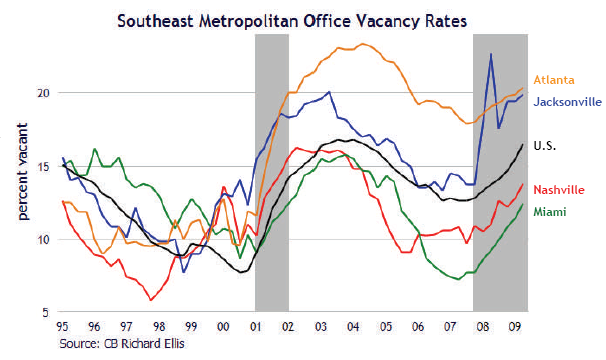
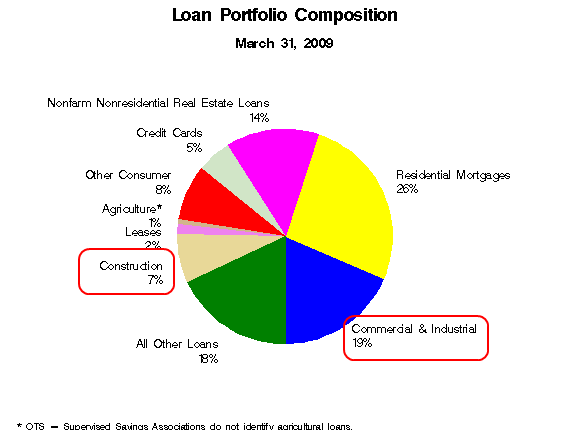
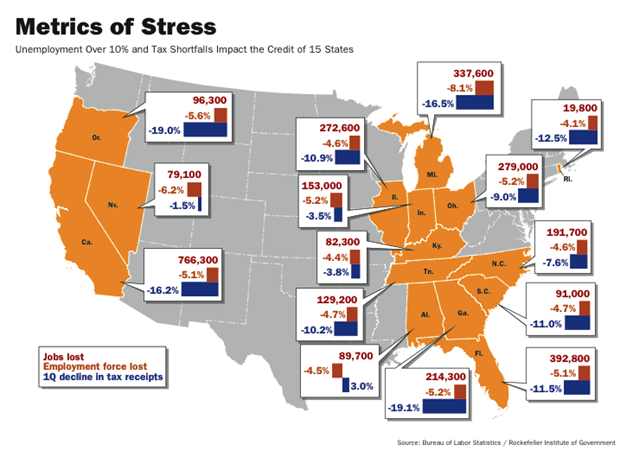
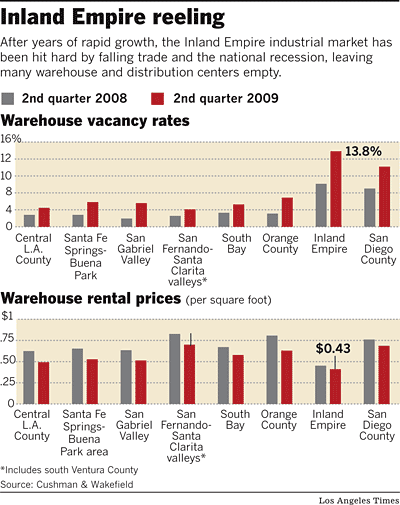
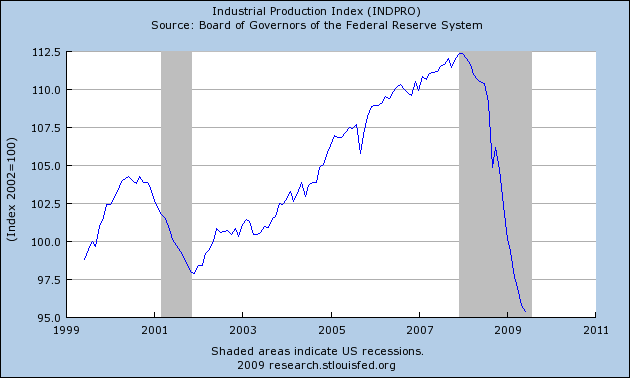
No comments:
Post a Comment